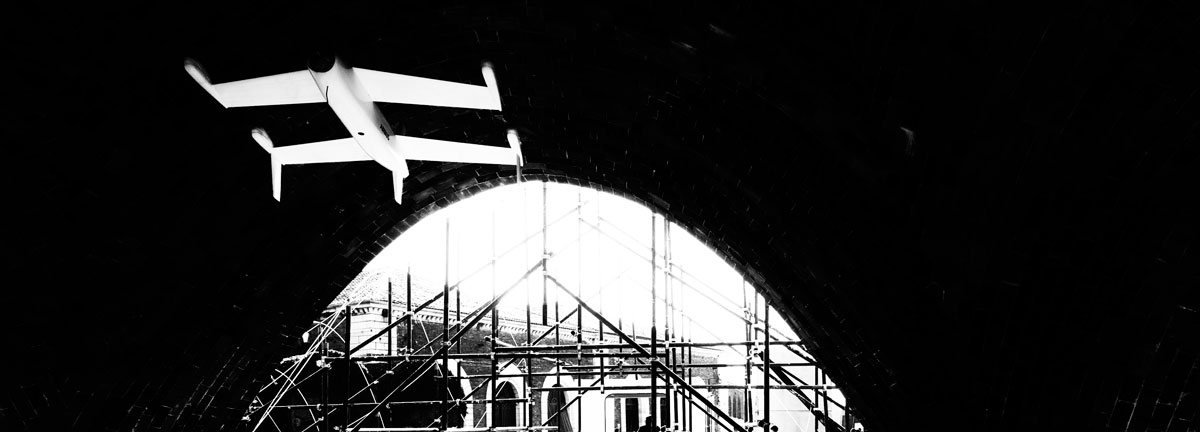Text by: A.H. Maines
For centuries the word “drone” referred exclusively to male honeybees whose only responsibility was to mate with the queen. Unlike worker bees, drones weren’t expected to bother with menial tasks like gathering nectar and pollen, building honeycombs or policing the hive entrance. Their status as royal concubines made them the deadbeats of hive life: all play and no work.
By the 16th century we were already expanding that concept, using “drone” to describe lazy human beings too. To “drone on” became an accepted phrasal verb, a way of criticizing people who spoke in long, lifeless sent ences that faded into background buzz, much the way bees hum when circling the hive.
ences that faded into background buzz, much the way bees hum when circling the hive.
Today the meaning of drone is expanding again, this time with far-reaching effect.
Military analysts already talk of “droning soldiers”: sending an armed, remote-controlled aerial drone to attack and kill enemy combatants. The original drones were stingless, evolved to avoid any unwarranted damage to their regal bedmate. Ironically, today’s military drones are all about the sting, designed to wreak death and destruction from on high. In YouTube videos, gamers echo the sentiment, “droning” other players by following them silently around the screen before moving in for a pixel-splattered kill shot.
Where, and what, will we be droning next?
Drones are unquestionably star players in the Internet of Things: expansion of today’s internet to everyday objects, giving them network connectivity, allowing them to send and receive data. Forget about the funky, four-propeller drone your neighbor likes to fly over your backyard, an extension of his eyes and ears into your family’s personal airspace. That’s nothing compared to where we’re headed.
Medical companies are creating drones designed to explore our arteries and dismantle clots before they can dislodge and damage the brain. Police in countless countries already use drones in everything from chases to traffic control to crime scene surveillance. In a video that went viral in 2015, Amazon showed the way the company wants to use drones to deliver packages effortlessly to your front door. Shopping centers are playing with drone shopping carts that will hum quietly along behind you as you browse, picking up your merchandise and delivering it to the register. Almost every popular videogame in the world uses avatars, two-dimensional drones the game’s players send out into the pixelscape to conquer castles, nuke metropolises, score phantasmagoric goals and machinegun zombies to a pulp.
Academics are exploring the idea of a work-free world; drone-dependent societies in which robots and other manmade proxies handle just about every task that employees around the globe are currently paid real money to do, from planting fields to harvesting crops, building homes and – why not? – constructing newer, more efficient drones to take the place of outdated models slated for techno retirement. Sociologists and philosophers alike wonder what mankind will do with all that newfound free time. Presumably eat, drink and make love with our chosen bedmates, royal or otherwise. Remind you of anyone?
The distinction between robot and drone is dropping away. As recently as a couple of decades ago our definition of technological drones was limited to “a pilotless airplane remote-controlled by radio signals.” But contemporary drones display early vestiges of lives of their own, performing many tasks without any human guidance whatsoever. Driverless rail trains and subways shuttle us from one terminal to the next at airports and from station to station underground, monitored and controlled by human eyes, but operating according to their own preprogrammed commands. What are arguably the most highly-anticipated techno-innovations of tomorrow – self-driving cars – are ultimately drones with human payloads, promising to free us all from the burden of actually paying attention to the road we’re traveling on. Will we still claim life’s lessons “come from the journey, not the destination,” or will the aphorism only apply to experiences our drones bring back for us to sample from the safety of home?
While we wait for the answer we continue to send them down to the seabed and out into space, their reports filtering back to us in scratchy imagery and the odd, buzz-filled chatter of starlight. The Mars rovers – Spirit and Opportunity – are droning dusty paths across the surface of the Red Planet even as this magazine goes to print, sending back data over 150 million miles of space in a conversation with their human controllers that takes almost half an hour to complete. One thing is clear: wherever man’s hand cannot reach, her drone inevitably will.
Should the dronification of human life be cause for concern? Current forays into voice-recognition software and development of the first voice-operated computer are producing more enthusiasm than preoccupation. Amazon’s Echo, a voice-driven computer with neither screen nor keyboard, promises to do for our homes what the iPhone did for communications, providing an open platform for apps that drive everything from dimmers to dishwashers. Should we be worried when drones wake us up, prepare our coffee, turn on the lights as we walk downstairs, start the car while it’s still parked in the garage, trundle our trash to the curb, remind us which meetings have been cancelled and confirm they’ll pick up the kids after practice?
It’s hard to feel scared. It all sounds so utterly convenient: a new, brave world we can relax in and bring buzzing to life around us. There’s no reason to worry. At least not until, one real-world morning, a self-flushing smart toilet sitting somewhere pipes up unbidden to say, “I drone, therefore I am.”



